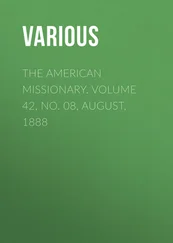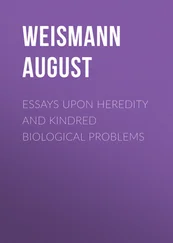August Weismann - Studies in the Theory of Descent, Volume I
Здесь есть возможность читать онлайн «August Weismann - Studies in the Theory of Descent, Volume I» — ознакомительный отрывок электронной книги совершенно бесплатно, а после прочтения отрывка купить полную версию. В некоторых случаях можно слушать аудио, скачать через торрент в формате fb2 и присутствует краткое содержание. Жанр: foreign_antique, foreign_prose, на английском языке. Описание произведения, (предисловие) а так же отзывы посетителей доступны на портале библиотеки ЛибКат.
- Название:Studies in the Theory of Descent, Volume I
- Автор:
- Жанр:
- Год:неизвестен
- ISBN:нет данных
- Рейтинг книги:4 / 5. Голосов: 1
-
Избранное:Добавить в избранное
- Отзывы:
-
Ваша оценка:
- 80
- 1
- 2
- 3
- 4
- 5
Studies in the Theory of Descent, Volume I: краткое содержание, описание и аннотация
Предлагаем к чтению аннотацию, описание, краткое содержание или предисловие (зависит от того, что написал сам автор книги «Studies in the Theory of Descent, Volume I»). Если вы не нашли необходимую информацию о книге — напишите в комментариях, мы постараемся отыскать её.
Studies in the Theory of Descent, Volume I — читать онлайн ознакомительный отрывок
Ниже представлен текст книги, разбитый по страницам. Система сохранения места последней прочитанной страницы, позволяет с удобством читать онлайн бесплатно книгу «Studies in the Theory of Descent, Volume I», без необходимости каждый раз заново искать на чём Вы остановились. Поставьте закладку, и сможете в любой момент перейти на страницу, на которой закончили чтение.
Интервал:
Закладка:
If, then, my explanation of the phenomena is correct, the winter form is primary and the summer the secondary form, and those individuals which, naturally or artificially, assume the winter form must be considered as cases of atavism. The suggestion thus arises whether low temperature alone is competent to bring about this reversion, or whether other external influences are not also effective. Indeed, the latter appears to be the case. Besides purely internal causes, as previously pointed out in P. Ajax , warmth and mechanical motion appear to be able to bring about reversion.
That an unusually high temperature may cause reversion, I conclude from the following observation. In the summer of 1869 I bred the first summer brood of A. Levana ; the caterpillars pupated during the second half of June, and from that time to their emergence, on 28th June–3rd July, great heat prevailed. Now, while the intermediate form Porima had hitherto been a great rarity, both in the free state and when bred, having never obtained it myself, for example, out of many hundreds of specimens, there were among the sixty or seventy butterflies that emerged from the above brood, some eight to ten examples of Porima . This is certainly not an exact experiment, but there seems to me a certain amount of probability that the high summer temperature in this case brought about reversion.
Neither for the second cause to which I have ascribed the power of producing reversion can I produce any absolute evidence, since the experimental solution of all these collateral questions would demand an endless amount of time. I am in possession of an observation, however, which makes it appear probable to me that continuous mechanical movement acts on the development of the pupæ in a similar manner to cold, that is, retarding them, and at the same time producing reversion. I had, in Freiburg, a large number of pupæ of the first summer brood of Pieris Napi , bred from eggs. I changed residence while many caterpillars were in course of transformation and travelled with the pupæ in this state seven hours by rail. Although this brood of P. Napi , under ordinary circumstances, always emerges in the summer, generally in July of the same year, as the summer form (var. Napeæ ), yet out of these numerous pupæ I did not get a single butterfly during the year 1872. In winter I kept them in a warm room, and the first butterflies emerged in January, 1873, the remainder following in February, March, and April, and two females not until June. All appeared, however, as exquisite winter forms. The whole course of development was precisely as though cold had acted on the pupæ; and in fact, I could find no other cause for this quite exceptional deportment than the seven hours’ shaking to which the pupæ were exposed by the railway journey, immediately after or during their transformation.
It is obviously a fact of fundamental importance to the theory of seasonal dimorphism, that the summer form can be readily changed into the winter form, whilst the latter cannot be changed into the summer form. I have thus far only made experiments on this subject with A. Levana , but the same fact appears to me to obtain for P. Napi . I did not, however, operate upon the ordinary winter form of P. Napi , but chose for this experiment the variety Bryoniæ , well known to all entomologists. This is, to a certain extent, the potential winter form of P. Napi ; the male (Fig. 14, Plate I Конец ознакомительного фрагмента. Текст предоставлен ООО «ЛитРес». Прочитайте эту книгу целиком, купив полную легальную версию на ЛитРес. Безопасно оплатить книгу можно банковской картой Visa, MasterCard, Maestro, со счета мобильного телефона, с платежного терминала, в салоне МТС или Связной, через PayPal, WebMoney, Яндекс.Деньги, QIWI Кошелек, бонусными картами или другим удобным Вам способом.
.) exactly resembles the ordinary winter form in the most minute detail, but the female is distinguished from Napi by a sprinkling of greyish brown scales over the whole of the upper side of the wings (Fig. 15, Plate I Конец ознакомительного фрагмента. Текст предоставлен ООО «ЛитРес». Прочитайте эту книгу целиком, купив полную легальную версию на ЛитРес. Безопасно оплатить книгу можно банковской картой Visa, MasterCard, Maestro, со счета мобильного телефона, с платежного терминала, в салоне МТС или Связной, через PayPal, WebMoney, Яндекс.Деньги, QIWI Кошелек, бонусными картами или другим удобным Вам способом.
.). This type, Bryoniæ , occurs in Polar regions as the only form of Napi , and is also found in the higher Alps, where it flies in secluded meadows as the only form, but in other localities, less isolated, mixed with the ordinary form of the species. In both regions Bryoniæ produces but one generation in the year, and must thus, according to my theory, be regarded as the parent-form of Pieris Napi .
If this hypothesis is correct – if the variety Bryoniæ is really the original form preserved from the glacial period in certain regions of the earth, whilst Napi in its winter form is the first secondary form gradually produced through a warm climate, then it would be impossible ever to breed the ordinary form Napi from pupæ of Bryoniæ by the action of warmth, since the form of the species now predominant must have come into existence only by a cumulative action exerted on numerous generations, and not per saltum .
The experiment was made in the following manner: In the first part of June I caught a female of Bryoniæ in a secluded Alpine valley, and placed her in a capacious breeding-cage, where she flew about among the flowers, and laid more than a hundred eggs on the ordinary cabbage. Although the caterpillars in the free state feed upon another plant unknown to me, they readily ate the cabbage, grew rapidly, and pupated at the end of July. I then brought the pupæ into a hothouse in which the temperature fluctuated between 12° and 24° R.; but, in spite of this high temperature, and – what is certainly of more special importance – notwithstanding the want of cooling at night, only one butterfly emerged the same summer, and that a male, which, from certain minute characteristic markings, could be safely identified as var. Bryoniæ . The other pupæ hibernated in the heated room, and produced, from the end of January to the beginning of June, 28 butterflies, all of which were exquisite Bryoniæ .
Experiment thus confirmed the view that Bryoniæ is the parent-form of Napi , and the description hitherto given by systematists ought therefore properly to be reversed. Pieris Bryoniæ should be elevated to the rank of a species, and the ordinary winter and summer forms should be designated as vars. Napi and Napeæ . Still I should not like to take it upon myself to increase the endless confusion in the synonomy of butterflies. In a certain sense, it is also quite correct to describe the form Bryoniæ as a climatic variety, for it is, in fact, established, if not produced, by climate, by which agency it is likewise preserved; only it is not a secondary, but the primary, climatic variety of Napi . In this sense most species might probably be described as climatic varieties, inasmuch as under the influence of another climate they would gradually acquire new characters, whilst, under the influence of the climate now prevailing in their habitats, they have, to a certain extent, acquired and preserved their present form.
Читать дальшеИнтервал:
Закладка:
Похожие книги на «Studies in the Theory of Descent, Volume I»
Представляем Вашему вниманию похожие книги на «Studies in the Theory of Descent, Volume I» списком для выбора. Мы отобрали схожую по названию и смыслу литературу в надежде предоставить читателям больше вариантов отыскать новые, интересные, ещё непрочитанные произведения.
Обсуждение, отзывы о книге «Studies in the Theory of Descent, Volume I» и просто собственные мнения читателей. Оставьте ваши комментарии, напишите, что Вы думаете о произведении, его смысле или главных героях. Укажите что конкретно понравилось, а что нет, и почему Вы так считаете.












